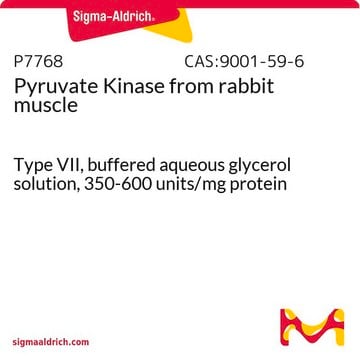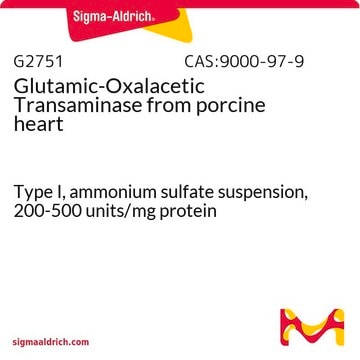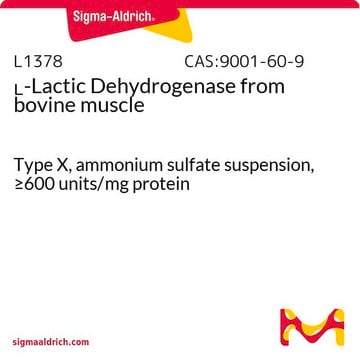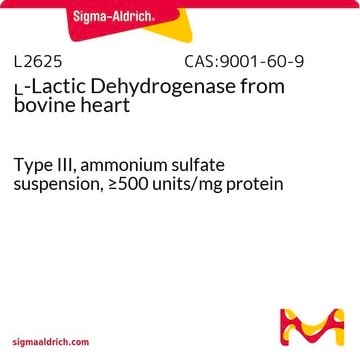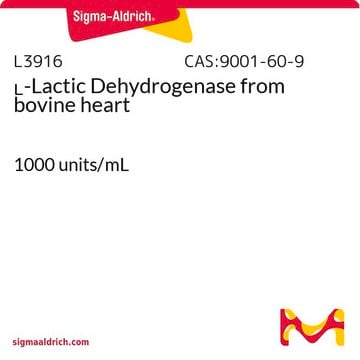L3888
D-Lactic Dehydrogenase from Lactobacillus leichmannii
lyophilized powder, 150-500 units/mg protein
Sinónimos:
(R)-Lactate:NAD+ oxidoreductase, D-LDH
Seleccione un Tamaño
85,40 €
Seleccione un Tamaño
About This Item
85,40 €
Productos recomendados
origen biológico
bacterial (Lactobacillus leichmannii)
Nivel de calidad
Formulario
lyophilized powder
actividad específica
150-500 units/mg protein
composición
Protein, ~50% biuret
actividad extraña
Malic dehydrogenase <0.5% of base activity
temp. de almacenamiento
−20°C
Categorías relacionadas
Descripción general
Lactate Dehydrogenase (LDH) is classified as an oxidoreductase and is found in various organisms, including both plants and animals. LDH is widely distributed across all tissues, with high concentrations in muscle, kidney, and liver. The genes encoding LDH are LDHA, LDHB, LDHC, and LDHD. The D-isomer is produced by LDHD.[1] There are two types of D-LDHs: NAD-dependent D-LDHs and FAD-dependent D-LDHs.[2]
Aplicación
Acciones bioquímicas o fisiológicas
Definición de unidad
Forma física
Código de clase de almacenamiento
11 - Combustible Solids
Clase de riesgo para el agua (WGK)
WGK 3
Punto de inflamabilidad (°F)
Not applicable
Punto de inflamabilidad (°C)
Not applicable
Equipo de protección personal
Eyeshields, Gloves, type N95 (US)
Elija entre una de las versiones más recientes:
Certificados de análisis (COA)
¿No ve la versión correcta?
Si necesita una versión concreta, puede buscar un certificado específico por el número de lote.
¿Ya tiene este producto?
Encuentre la documentación para los productos que ha comprado recientemente en la Biblioteca de documentos.
Los clientes también vieron
Filtros activos
Nuestro equipo de científicos tiene experiencia en todas las áreas de investigación: Ciencias de la vida, Ciencia de los materiales, Síntesis química, Cromatografía, Analítica y muchas otras.
Póngase en contacto con el Servicio técnico





